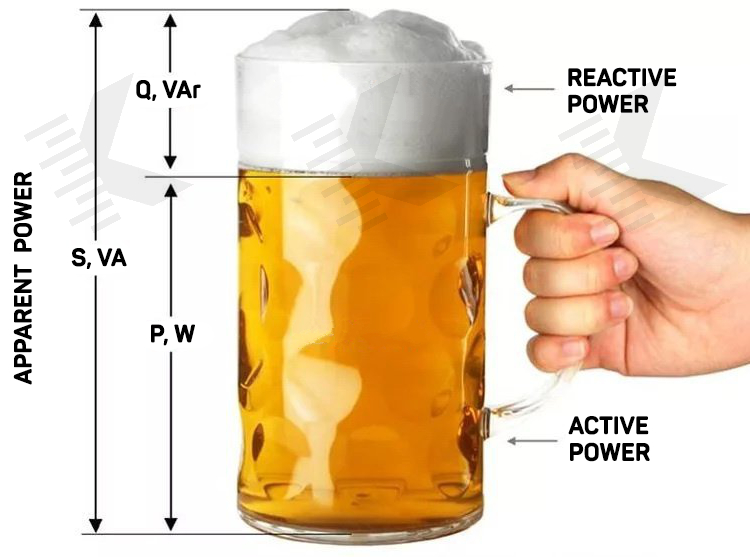How to calculate power?
Power – physical quantity equal to the ratio of the amount of work to the time it takes to do the work.
Electrical power (P) – quantity that describes the rate at which electrical energy is converted into other forms of energy. The international unit of measure is the Watt (W).
This tool helps you calculate power by current and voltage for single-phase (220 V) and three-phase (380 V) networks. The program also calculates power through resistance and voltage or through current and resistance according to Ohm's law.
The value of cos φ is taken according to the instructions in the instrument's data sheet, the averaged values of the tables below or calculated independently by the formulas. It is recommended not to change the coefficient unnecessarily and to leave it equal to 0.95.
Click on the "Calculate" button to get the result.
Power calculation formulas
— Power through amperage and voltage (DC): P = I × U
— Power through amperage and voltage (AC single-phase): P = I × U × cos φ
— Power through amperage and voltage (AC three-phase): P = I × U × cos φ × √3
— Power through amperage and resistance: P = I2 × R
— Power through voltage and resistance: P = U2 / R
- I – amperage, А;
- U – voltage, V;
- R – resistance, Ω;
- cos φ – power factor.
What is power factor (cos φ)?
φ – phase angle between current and voltage, and if the latter is ahead of the current it is positive, and if it is behind, it is negative.
cos φ – dimensionless quantity which is equal to the ratio of active power to apparent power and indicates how efficiently energy is being used.
Power factor formula: cos φ = S / P
- S – apparent power, VA (Volt-Ampere);
- P – active power, W.
Active power (P) — real, useful power, this load absorbs all the energy and turns it into useful work, such as light from a light bulb. There is no phase shift.
Active power formula: P (W) = I × U × cos φ
Reactive power (Q) — wattless (useless) power, which is characterized by the fact that it does not participate in the work, but is transferred back to the source. The presence of the reactive component is considered a harmful characteristic of the circuit, because the main purpose of the existing power supply is to reduce costs, not to pump it back and forth. This effect is created by coils and capacitors.
Reactive power formula: P (VAr) = I × U × sin φ
Apparent power (S) — total value, which includes both active and reactive power components.
Apparent power formula: S (VA) = I × U or S = √( P2 + Q2)
Power factor correction – table
| Appliance | cos φ |
| Boiler | 1 |
| Grinder | 0.8 |
| Vacuum pump | 0.85 |
| Induction furnace | 0.85 |
| Compressor | 0.7 |
| Computer | 0.95 |
| Coffee machine | 1 |
| Gas discharge lamps | 0.4-0.6 |
| Fluorescent lamps | 0.95 |
| Incandescent lamps | 1 |
| Heater | 1 |
| Rotary hammer | 0.85 |
| Vacuum cleaner | 0.9 |
| Microwave oven | 1 |
| Washing machine | 0.9 |
| TV | 1 |
| Iron | 1 |
| Hair dryer | 1 |
| Fridge | 0.95 |
| Electric drill | 0.85 |
| Electric motors | 0.7-0.8 |
| Electric stove | 1 |
| Electric arc welding | 0.3-0.6 |
| Electric kettle | 1 |




